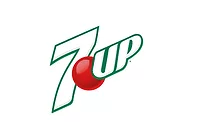Cheerwine celebrates 100 years of success
CSD brand grows 15 percent, expands distribution
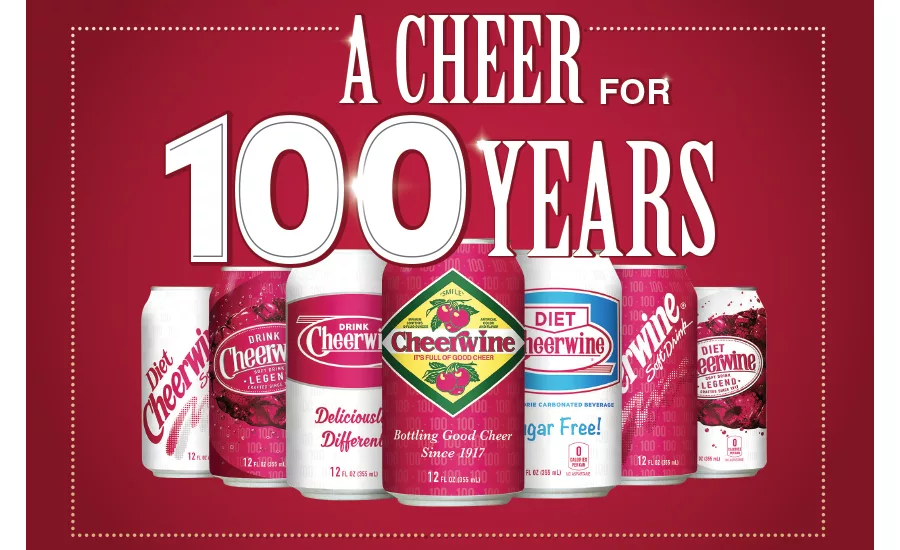
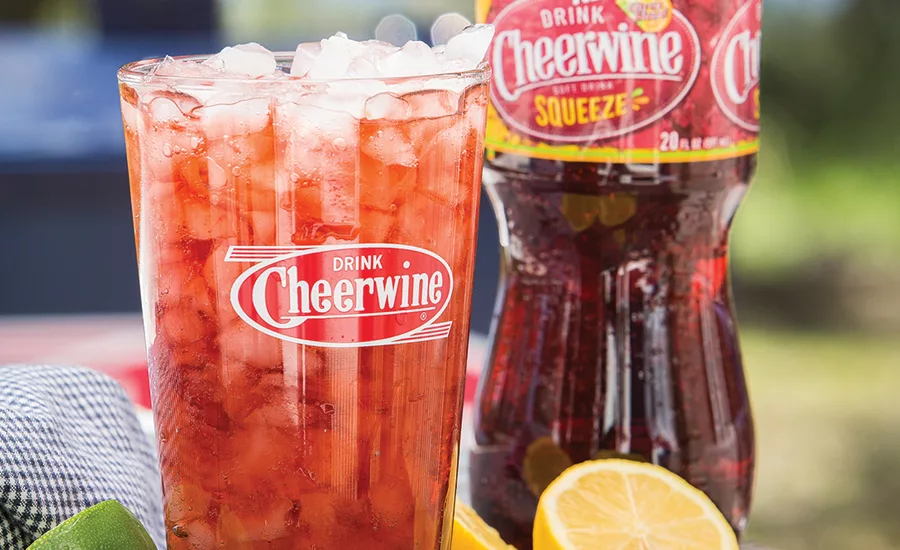

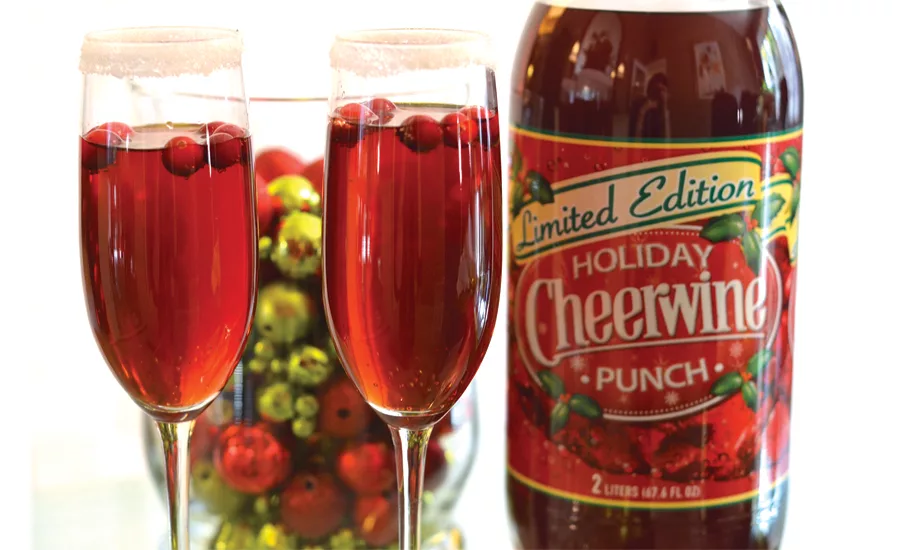
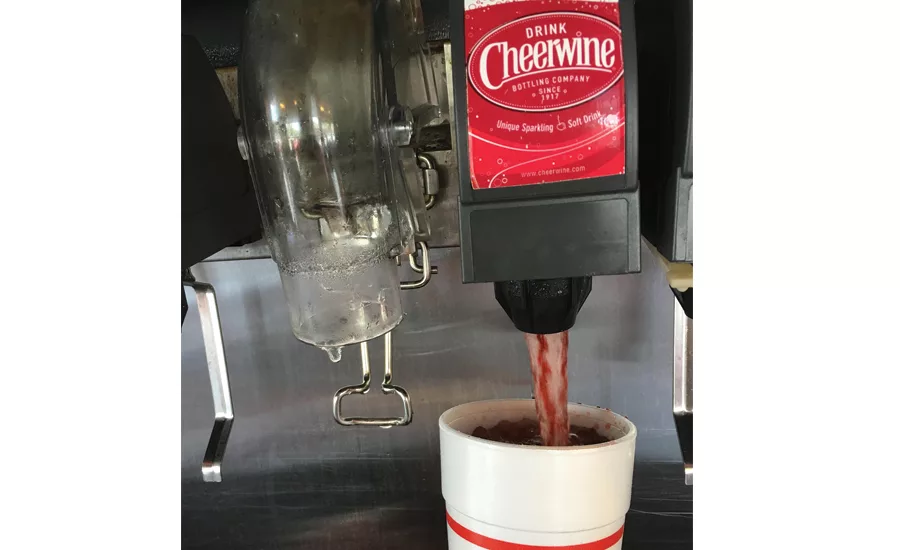
Despite an atmosphere in which many carbonated soft drinks have struggled to maintain sales, Cheerwine, a brand of Salisbury, N.C.-based Carolina Beverage Corp., has experienced continual growth, both in sales and distribution.
“Cheerwine has had great success in the last several years, outperforming the beverage industry by leaps and bounds,” says Cliff Ritchie, president and chief executive officer of Carolina Beverage Corp. “We have a lot more opportunity to expand than a lot of other brands do, so we’ve had a lot of growth through expansion and entering and getting deeper in different channels. We have just completed the best year we’ve ever had in 2016.”
In fact, the brand’s regular Cheerwine flavor experienced 15 percent growth in 2016 and leads all brands in the portfolio, according to Ritchie. However, Diet Cheerwine was flat during the year, he notes.
Now celebrating its 100th anniversary, the company sees more opportunities for growth going forward. “I would hope that we’ve got another 100 years ahead of us,” Ritchie says. “There’s certainly a lot of consumers that have never experienced Cheerwine. That would be the goal is to expand nationally, and, like I said, there’s a long way to go.”
Centennial celebration
An iconic cherry-flavored soft drink based in the Southeastern United States, Cheerwine began 100 years ago in Salisbury, N.C., and remains an independent, family owned business to this day.
“It’s always been a family business, and we hope to keep it that way,” Ritchie says. “… As long as family members want to be involved and are capable of managing and operating the business, we don’t see any reason not to continue in the family.
“I’m the fourth generation, and I have two children in the business, fifth generation, and they’re very capable and smart young folks,” he continues. “I look for them to continue on.”
That family history dates back to 1913 when L.D. Peeler acquired the franchise Mint Cola to be the local bottler of the product in Salisbury, N.C., explains Ritchie and his daughter Joy Harper, the company’s director of marketing. When World War I and the sugar shortage hit, Mint Cola went out of business. At that point, Peeler began to experiment, eventually founding the soft drink brand Cheerwine in 1917.
“Mint Cola went out of business, and he was faced with getting out of the soft drink industry or reinventing himself,” Ritchie says. “So he started experimenting with different flavors, and his objective was to come up with a product that had sweetness but used less sugar [and] trying to do that with flavor. In all that experimentation, he came across Cheerwine.”
Harper explains that the name of the product also is rooted in its long history. “In 1917, beverages were named after what they looked like, such as root beer or ginger ale, and so the Cheerwine name came from the wine, from the burgundy red color that the product resembles, and then the cheer, because Cheerwine is very bubbly, cheerful as well as it has a wild cherry taste.”
The company continues to use the Peeler’s formula for Cheerwine to this day, with the minor alteration for the use of high-fructose corn syrup in its canned and PET bottled regular flavors.
The brand continues to stay true to these roots, which has allowed it to build a loyal consumer base, Harper notes.
“One of the reasons we do believe Cheerwine has been around for so long is that we have continued to offer the same great taste, we haven’t changed the formula for our 100 years, and we’ve also stayed true to our values of authenticity and independence, and we’ve found that that matters to our fans,” she says. “Even when introducing Cheerwine to new consumers, first, the taste matters, [but] once people have tried the brand they do enjoy learning about our backstory and our brand values and that is a draw that keeps people attracted to Cheerwine.”
Celebrating its rich history and continued success in a struggling category, the brand announced plans to celebrate its anniversary with its consumers throughout the year. Harper notes that the celebration will include a variety of elements.
“Throughout 2017, we are rolling out a collectable can series that features designs from our past. There’s a total of seven cans, and within these 12-packs we’ve added $100 instant-win cans that are sprinkled throughout our territory,” Harper explains. “We have a commemorative glass bottle and collectable merchandise. The Rowan museum, which is based in Salisbury, is featuring a Cheerwine exhibit all year. They’ve done a nice job showcasing Cheerwine artifacts, photos and memorabilia. It’s a really neat thing to check out and see Cheerwine’s past 100 years.”
In addition to the collectable can series, all of Cheerwine’s packages will carry its 100th anniversary messaging, she says.
On May 20, the company will host a free birthday celebration in its hometown of Salisbury, N.C., which will include live bands, free Cheerwine, a barbeque cook-off and more.
“It’s something we’re all very excited about and proud to be a part of,” Harper says. “How many companies, especially family owned, make it to 100 years? It’s something that we’re very proud of.”
Flavor variation
Although using Cheerwine’s original formula has been essential for the brand in creating a loyal consumer base, offering consumers variety also is important, Harper notes. In line with soft drink trends, the company launched Diet Cheerwine in 1969, and has since introduced a number of other flavor variations.
“Cheerwine Squeeze is a permanent part of our brand portfolio, and we launched that in 2015 in more of our home territory of North Carolina and South Carolina,” she explains. “… It’s performing well. Cheerwine Squeeze is a mix of Cheerwine with a blend of citrus flavors, so some lemon-lime and orange.”
Harper explains that Cheerwine Squeeze and some of Cheerwine’s other flavor variations are based off of mixes that consumers have made in their homes. “We’ve known a lot of our fans to mix Cheerwine with different flavors,” she says. “Whether it’s making a punch or a cocktail, Cheerwine is just a good ingredient. By using some of those recipe variations, we came up with Cheerwine Squeeze.”
The brand also has two limited-edition flavors that are available at different times throughout the year, Harper says. For example, Cheerwine Holiday Punch first launched in 2014 and has been released during the fourth quarter every year since.
“Cheerwine Punch is a recipe that has been around for generations,” she explains. “It was always a part of my family traditions growing up. So, a couple years ago, we decided to actually bottle the punch and offer it in a premixed 2-liter bottle, and that’s been successful the last three years that we’ve offered that product.”
Its second limited-edition flavor — Cheerwine Kreme — initially launched last summer in partnership with Krispy Kreme, another North Carolina-based company. The product blends Cheerwine flavor with a hint of Krispy Kreme’s Original Glazed flavor, the company says.
“That was exciting when we launched that,” Harper says. “It’s powerful when you bring two strong North Carolina brands together: Cheerwine and Krispy Kreme. Krispy Kreme is located just up the road from us in Winston-Salem, and both of our fans really enjoyed that.”
She adds that the company plans to relaunch the limited-edition product again this summer.
The company particularly enjoys the opportunity to partner with other North Carolina companies in an effort to provide their consumers with unique products, Harper notes.
“Krispy Kreme actually offered a Cheerwine doughnut back in 2010,” she says. “It’s been fun collaborating with other Southern-based brands.
“We have worked with other brands,” she continues. “Food Lion, which is based in Salisbury, North Carolina, has offered a Cheerwine ice cream before, and there’s a Cheerwine barbecue sauce that’s distributed locally.”
Sharing the cheer
In order to reach consumers, the brand utilizes a plethora of marketing techniques, Harper notes.
“We use a combination of traditional and digital media, and then social media is, of course, very important to us,” she explains. “It’s a great way for us to have a two-way conversation with our fans, and we’re really thankful for the loyal fans we have. Cheerwine fans have a sense of pride for the brand and really take ownership over it and introduce it to their family and friends, so that’s something we’ve been very thankful for.”
When it comes to social media, Cheerwine is active on Facebook, Twitter, Instagram, Pinterest and YouTube, Harper says.
In line with the brand’s southern roots, Cheerwine is the official soft drink of the National Barbecue & Grilling Association. “Cheerwine is a great complement to food, but particularly barbecue,” she says. “I believe Cheerwine has been paired with barbecue for its 100 years. Barbecue has a lot of history in North Carolina. There’s a lot of pride in the type of barbecue that’s served, whether that’s different parts of the state or even South Carolina has a different type of barbecue. So, I do think because of the southern culture, and how engrained barbecue is in that, it’s a natural fit for Cheerwine.
“… Being a partner with the National Barbecue [& Grilling] Association, it does give us the ability to further highlight Cheerwine’s pairing with barbecue, and it’s allowed us to connect with different restaurants across the country, and it’s also supported [the association]. They were looking for a beverage to be a part of their association, [and] they wanted one that made sense and fit well with their culture.”
The brand also utilizes its packaging to communicate to its consumers, often times via limited-edition packages. “We found that offering limited-edition packaging has been a great way to communicate our Cheerwine programs and key messages to our fans,” Harper says.
For the past five years, Cheerwine also has partnered with North Carolina folk rock band The Avett Brothers on a limited-edition 12-pack. “It’s designed by an artist that the band [has] worked with for some of their album covers and posters, and each year we host a legendary give-back benefit concert that benefits various nonprofit organizations, but communicating that on our 12-pack has been a great way to spread the word. It’s also a collectable piece.”
Cheering up new markets
Operating out of eight distribution centers and one production center, Cheerwine mainly is distributed on the East Coast and in the Southeast United States through Cheerwine Bottling Co., according to Ritchie. However, the company has been working to expand the product’s distribution.
According to Ritchie, the brand developed an initiative within the past few years to bring Cheerwine to markets outside of its traditional distribution territory. In order to make the move into new markets, Cheerwine began utilizing franchise bottlers, Ritchie explains.
“In markets outside of our territory, we have a bottler, a franchise bottler,” he says. “We are going direct with the glass package to the large retailers around the country.”
As part of its expansion strategy, Cheerwine has benefited from the proliferation of craft sodas, despite the fact that Cheerwine is not a craft or specialty beverage, Richie notes.
“The other thing that’s happening in the soft drink industry is the acceptance of what could be described as craft or specialty soda,” he explains. “The glass bottle and our brand can fit into that space and play very well. We can be mainstream where we have our old, traditional territory, but in the new markets, we can play in the craft space.”
Cheerwine offers a cane sugar-sweetened variation of its original formula in 12-ounce glass bottles, which has been advantageous in new markets because of the craft beverage trend, Ritchie says.
However, this is not the only way the brand has gained distribution in new territories. Fountain also has proven to be an invaluable opportunity for the brand to gain trial in new markets, Ritchie explains.
“The other thing that’s driving our business is our fountain side of our business. Cheerwine is an excellent fountain product,” he says. “The brand goes very well with food, and we’ve been very successful in developing our fountain business, not only locally but even beyond. Where we have franchise bottlers, we’ve been very successful in going into fountain.
“Outside of the territory where Cheerwine is known, it needs to be a self-serve fountain where the customer has the chance to see it and interact with it,” Ritchie continues. “When we do have self-serve, anywhere in the country, really it’s an amazing thing. We can be the No. 2 or 3 brand on the fountain.”
In fact, 30 percent of Cheerwine’s business is in fountain, Ritchie says.
Harper adds that sampling on the fountain offers a great connection to the brand for first-time Cheerwine consumers. “In terms of different packaging types, our top-selling packages are the traditional soft drink packages — 2-liters, 12-packs and 20-ounce — but Cheerwine also performs very well on fountain, so that’s been an area we’ve been growing in. It’s also a great place for people to first try Cheerwine and sample Cheerwine before purchasing the take-home package,” she says.
“Sampling is a great way to first try the brand,” she continues. “There’s not much risk when you’re at a restaurant trying different fountain flavors, so that’s a good time to first experience Cheerwine, and Cheerwine’s also a good complement to food.”
However, marketing also plays a role in reaching consumers in new markets, Harper says.
“We found that social and digital media have been very effective when moving into a new market,” she says. “With us being a smaller brand, we don’t necessarily have the large advertising budget to make a traditional media buy. Sampling is also very effective, attending events that are local to that market. We found that once someone tries Cheerwine they normally do enjoy the taste and will be more inclined to buy it. And of course, we tie that in with in-store marketing efforts that are visible at store-level so that people can find us.” BI
Looking for a reprint of this article?
From high-res PDFs to custom plaques, order your copy today!



